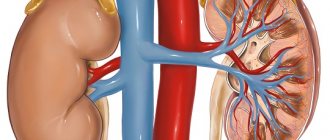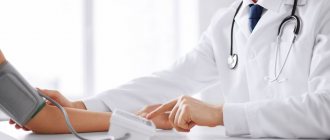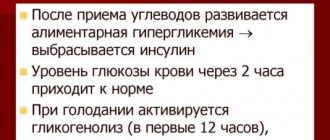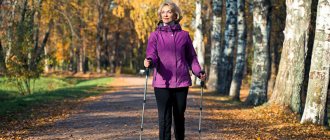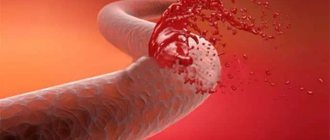What does low blood pressure mean after exercise?
- The most harmless disease in which low blood pressure after exercise does not threaten life is vegetative-vascular dystonia. In this case, the lumen of the vessels does not have time to adequately adapt to the body’s requirements and a drop in pressure may occur.
- If you overheat in the sun and get heatstroke, even minor work or stress on the body can lead to a decrease in blood pressure below 90 to 60. In this case, the person turns pale, spots appear in his eyes, dizziness, and he may lose consciousness.
- Mitral valve prolapse, which often affects tall and thin young men, can also cause a drop in blood pressure even when standing up suddenly.
- A paradoxical vascular reaction is typical for patients with the initial stages of hypertension, especially if they have been involved in sports for several years before. Physical activity in such people leads to a decrease in blood pressure to normal or low numbers, while at rest they may have high blood pressure.
- More serious conditions are weakness of the sinus node and various types of bradyarrhythmias (heart block). In this case, electrical impulses from the pacemaker either do not reach at all or are significantly reduced. As a result, blood flow suffers and blood pressure may drop. Weakness of the sinus node requires surgery to establish a pacemaker, and arrhythmias require conservative treatment.
- Very low blood pressure after exercise combined with a prolonged attack of squeezing or pressing pain in the heart or behind the sternum is a sign of severe angina or myocardial infarction. In this case, you should immediately put a nitroglycerin tablet under your tongue or spray it with nitro spray and immediately call an ambulance.
Nothing hurts, but I don’t even have the strength to get out of bed... Is this a familiar state? It may be a sign of low blood pressure. Yulia Sachuk, a cardiologist at Petrozavodsk Polyclinic No. 4, spoke about what hypotension is and how to live with it.
– Yulia Viktorovna, what kind of blood pressure is considered low and is called hypotension?
– Less than 100/70 or 90/60, but there are a few caveats. First of all, you need to understand that hypotension can be of two types. If we are talking about physiological hypotension, then for many people this is a completely normal condition.
That is, a person with a blood pressure of 90/60 can feel very good; for him, such seemingly low blood pressure is not hypotension. This is his normal state.
Most often, such pressure occurs in fragile and petite girls and slender young women. In men, overweight people, hypotension is much less common.
In addition to physiological, hypotension can be secondary, when a decrease in pressure occurs due to a number of reasons. For example, after taking medications that lower blood pressure in hypertensive patients, if their dosage is not adjusted. Or after taking medications, the side effect of which is a decrease in blood pressure.
Certain diseases can lead to secondary hypotension, in particular any intoxication of the body (ARVI and other inflammatory diseases), anemia (decreased hemoglobin), as well as chemotherapy for oncology.
– What does a person experience with hypotension?
– General weakness, drowsiness, fatigue, nausea...
– Isn't nausea a sign of high blood pressure?
- Not only. Symptoms such as headache, dizziness, trembling in the body, in the hands, palpitations, nausea can occur with both hypertension and hypotension.
– Are there medications for hypotension?
– There are no clinical recommendations for prescribing drugs for hypotension. In order to slightly increase blood pressure, as a rule, they take caffeine-containing medications, you can also drink strong tea, herbal infusion, a cup of coffee, or eat a piece of dark (that’s right, bitter!) chocolate.
In addition, you can lie down with your legs elevated: in this case, blood flow to the heart increases and the pressure rises slightly.
– If a person suddenly gets up from bed, for example in the morning, and feels dizzy, is he hypotensive?
– In this case, we can talk about the so-called orthostatic hypotension, that is, a condition that occurs during a sharp transition from a horizontal to a vertical position. The advice here is this: when sleeping, the head should be higher than the lower part of the body, that is, such people are not recommended to sleep without a pillow, as many people do now.
In addition, they should not get up abruptly; it is better to do it calmly, without rushing, so that the body has time to stabilize: first, sit down on the bed, pause, and then you can get up.
– Everyone knows that hypertension can lead to serious consequences such as stroke or heart attack. What about hypotension?
– Low blood pressure can be dangerous, of course. Most often in older people taking pills for hypertension. Moreover, the most dangerous time is in the morning. The fact is that at night a person’s blood pressure usually drops slightly, and while taking antihypertensive drugs this decrease is even greater. Therefore, it is very important to follow the correct dosage of medications.
– How dangerous is hypotension for pregnant women?
– I will say this: the greater danger for them is high blood pressure, which can lead to complications and premature birth.
– How does the weather affect hypotensive patients?
– They are often sensitive to weather changes, especially in the off-season, during the transition from one season to another. More often in spring and autumn.
– If a person lives with low blood pressure for many years, does this mean that he is not at risk of hypertension?
- Of course not! Hypotension is not a guarantee that you will never have hypertension. It can develop as an independent disease under the influence of various factors, when the neurohumoral regulation of the body is disrupted, that is, the nervous and vascular systems begin to work not quite correctly. Hypertension can also be hereditary.
It is worth noting that for hypotensive people the limits of high blood pressure are somewhat lower. For example, everyone knows that hypertension is when blood pressure repeatedly exceeds 140/90. So, for those who have always had low blood pressure, 130/80 may already be the initial manifestation of hypertension.
Of course, if we talk about hypertension and hypotension, then today throughout the world it is hypertension, that is, arterial hypertension, that “contributes” to mortality from cardiovascular diseases both in our country and in Europe, and, in general, in all over the world. But hypotension cannot be ignored either. In any case, if something bothers a person, you need to see a therapist.
By the way
- Low blood pressure and a sedentary lifestyle are a very bad combination. Hypotonic people benefit from dosed physical activity, because this increases blood pressure slightly. You can dance, swim in the pool, ski, walk or bike... The load should be selected individually, taking into account existing contraindications.
- Hypotensive people need to eat regularly, at least four times a day. A diet with a high content of potassium (potatoes, eggplants, cabbage, prunes, apricots) and calcium (dairy and fermented milk products, cheeses) helps improve your well-being.
- It is recommended to sleep at least 7-8 hours a day, ideally all 9. Otherwise, lethargy and irritability are guaranteed.
How to adjust pressure
If a person suffers from strange surges in blood pressure: he has high blood pressure or low blood pressure after exercise, he should see a doctor and be seriously examined - all pathological situations should be under the supervision of a cardiologist. With vegetative-vascular dystonia, blood pressure fluctuations against the background of hormonal imbalances, with mild forms of hypertension, extrasystole, it is possible to take care of your health using not so much drugs, but the body’s hidden capabilities for self-regulation. Specialists from the M.S. Norbekov Center can help with this. Here, for example, health courses for hypertension and a “Healthy Endocrine System” course are held, which can help cope with the problem of unstable blood pressure.
Signs of the condition
The main signs of hypotension that occurs during and after sports activities include:
- feeling of weakness, faintness (especially if the lower part of the body is involved during training: buttocks, legs, shins);
- increased drowsiness;
- dizziness when performing exercises in which the head is lower than the level of the body.
Most often, such signs are observed in people with an insufficient level of physical fitness. Over time, after the body adapts, the above symptoms disappear.
Recommendations for performing exercises
During training, you must adhere to the following rules:
- Regularity of classes. You need to do the exercises every day, remembering to alternate them and add new ones. It is also recommended to change the nature of the exercises and the number of repetitions.
- Duration of training (at least 3 months). A set of exercises for people with low blood pressure was designed in such a way that the effect was visible within a week after the start of exercise. But this does not mean that after a week you should stop training. Regular training over a long period will help not only significantly improve your condition, but also consolidate the results.
- Gradual increase in loads. If a person with hypotension decides to engage in physical exercise, then in the initial stages he should under no circumstances put too much strain on himself. This is due to the fact that the patient’s body must adapt to new conditions. In the case of a “sharp start,” certain problems with well-being may arise during the training process: headache, poor health, severe weakness. If they occur, it is necessary to stop physical activity, as this can provoke loss of consciousness.
- When training, it is very important to monitor your blood pressure; if they decrease, it is necessary to reduce the load level.
Special set of exercises
It is also useful for people with low blood pressure to perform the following exercises:
- Ordinary walking. At first you need to limit yourself to 5-10 minutes, then gradually increase the time (but no more than half an hour).
- Pushups. During the exercise, you need to keep your back straight and place your arms slightly wider than your shoulders.
- Abs training. Take the starting position (lying on your back, feet on the floor, hands behind your head). First, raise your head, neck and shoulders, and then your upper body. The exercise must be performed slowly, at an average pace.
- Squats. It is important not to bend your back while doing squats.
- Lunges forward. The technique is as follows: take a step forward, with your back straight, after which the knee of the front leg bends approximately 90 degrees. Then you need to return to the starting position. The same exercise is performed on the other leg.
- Bike. You need to lie on your back, raise your legs and spin imaginary pedals.
- Scissors. For arms, this exercise should be performed in a standing position, for legs - lying on your back.
- Holding your legs. You need to lie on your back, arms and legs should be in line. The head comes off the floor, and the feet rise above its level by 45 degrees. Hold this position for no more than 5 seconds, then return to the starting position. It is recommended to do 5-7 repetitions.
Regular repetition of the above exercises will help reduce the symptoms of low blood pressure. After two weeks of exercise therapy, blood pressure levels will return to normal, and the activity of the heart muscle and lungs will improve.
It is important to breathe correctly during exercise. Experts recommend breathing through your nose. It is necessary to compare motor acts with the rhythm of breathing.
Breathing exercises are an integral part of any training process. Experts recommend doing them 3 times a day. They need to be done before and after the main workout. When performing breathing exercises, it is important to control not only the intensity of inhalation and exhalation, but also the frequency of the rhythm. Regular breathing exercises will activate the respiratory tract system and fill the body's cells with oxygen.
